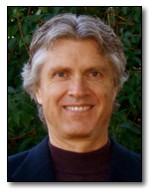|
Medicial Mistakes?
How many people each year suffer some type of preventable harm that contributes to their death after a hospital visit?
|
|
| | Bodywork & Somatic Therapies: Varieties and Techniques of Massage and Bodywork | |
|
As Elliot Greene states, "It is very common that someone will come in for one reason, and then they will discover another whole dimension to the problem or to themselves that they want to explore."
Reiki. This is the Japanese word for "universal life force energy." It is an ancient approach in which the practitioner is a kind of healer in the sense that he or she serves as a conduit for healing energy coming from the universe.
The Reiki energy enters the practitioner through the top of the head and exits through the hands, being directed into the body or energy field of the recipient. Reiki is another very subtle form of healing and may be done through clothing and without any physical contact between practitioner and client.
While all the above energetic methods appear to operate on different principles than most other varieties of massage therapy and bodywork, they nonetheless have an important and growing role.
Other Approaches
Integrative Methods. There are other approaches and combinations of approaches that do not fit neatly into any of the above categories. Many massage therapists and bodyworkers use combinations of approaches that could be called integrative massage or integrative bodywork.
CranioSacral Therapytm. This approach was named in 1977 by John Upledger, D.O., and Ernest Retzlaff, Ph.D., to distinguish it from Sutherland's cranial osteopathy. According to Upledger, "CranioSacral Therapy is not osteopathy. Sutherland's approach was bone-oriented and you make bony corrections. This is soft tissue-oriented, fluid-oriented, membrane-oriented, and energy-oriented. It's much more subtle than any other kind of cranial work I know of."3
Palpation (touch by the practitioner) is used both to observe and treat dysfunctions in the craniosacral system, which includes the head, spinal column, and sacrum in one continuous membranous sheath. This system has its own pulse for circulating the cerebrospinal fluid (six to twelve cycles per minute) and the practitioner can feel the rate, amplitude, symmetry, and quality of the rhythm—somewhat analogous to pulse diagnosis in Ayurveda and Chinese medicine. Corrective pressure of only about five grams (the weight of a nickel) is applied to various areas to promote the re-establishment of a normal, symmetrical pattern of pulsation throughout the system. This in turn allows more efficient functioning of the entire nervous system throughout the body.
Upledger reports success in treating chronic pain, chronic brain dysfunctions when there is no structural problem involved, endogenous depression, migraines, learning disabilities, dyslexia, hyperkinesis, spasticity in cerebral palsy, strabismus (cross-eyes), Ménière's disease (vertigo), and many other conditions.
Reflexology. This approach involves the manual stimulation of reflex points on the ears, hands, and feet. Similar methods resembling shiatsu and acupressure have also been practiced in China for thousands of years. Thumb pressure is applied to specific points that correspond somatotopically to specific areas or organs of the body.
Reflexology was introduced to this country by William Fitzgerald, who termed it "zone therapy," in the early 1900s. One of the contemporary explanations for how it works is that compression by specific touch techniques affects a system of points and areas that are thought to "reflex" through neurological pathways to distant parts of the body. The pressure on these reflex points (also called "cuteneo-organ reflex points") is used to relieve stress and tension, to improve blood supply, to promote the unblocking of nerve impulses, and to help restore homeostasis or balance in the body.
Zero Balancing. This is a painless, hands-on method of aligning body energy with body structure. It is done through clothes and involves the practitioner in using gentle pressure at key areas of the skeleton in order to balance the energy body with the structural body.
The theory holds that each of us has an unseen energy body that exists like a glove surrounding the physical body. When injury or trauma occurs, healing of these two bodies does not necessarily occur simultaneously. "Balancing" refers to balancing the relationship between energy and structure. Zero Balancing seeks to bridge the gap between those methods that work with structure and those working with energy.
Published by arrangement with Warner Books, Inc., New York, New York, U.S.A. All rights reserved.
Nothing in this book should be considered as medical advice for dealing with a given problem. You should consult your health care professional for individual guidance with specific medical problems.
(Excerpted from The American Holistic Health Association Complete Guide to Alternative Medicine ISBN: 0446518174)
 | William Collinge, PhD, MPH is a consultant, author, speaker and researcher in the field of integrative health care. He has served as a scientific review panelist for the National Institutes of Health in mind/body......more |
|
|
Popular Related Articles/Areas
Popular & Related Products
Popular & Featured Events
Dimensions of Wellness
|
|